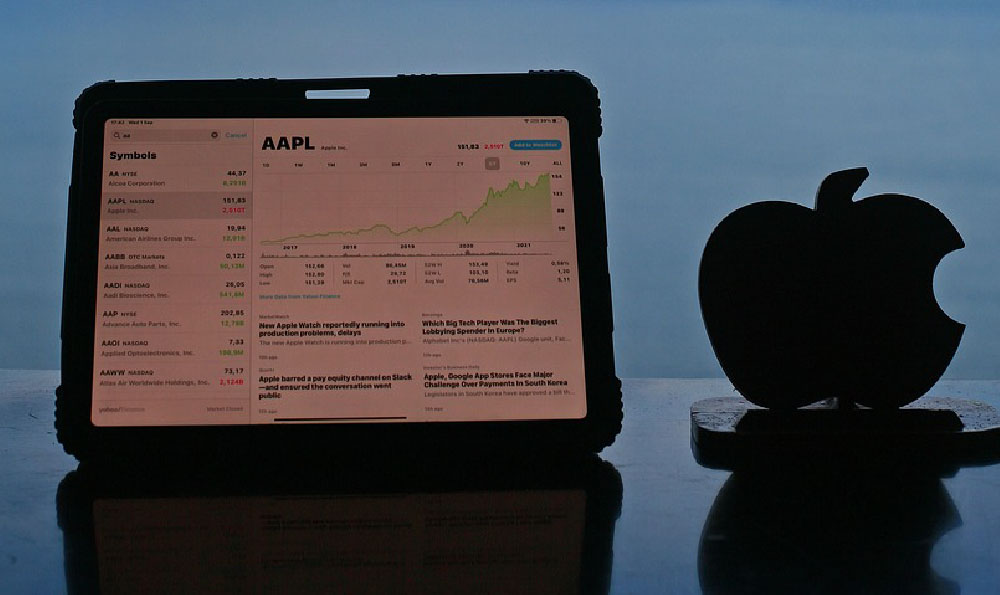Apple Inc. has consistently maintained a position as one of the world's most successful and influential technology companies, with its annual earnings and revenue figures serving as key indicators of the broader tech industry's health. In recent years, the company's financial performance has demonstrated a remarkable resilience, even amidst global economic uncertainties and shifting consumer behaviors. By examining the trends in revenue generation across different product segments and the underlying drivers of profitability, investors and analysts can uncover valuable insights into Apple’s strategic priorities and market dominance.
The annual earnings and revenue reports from Apple reveal a complex interplay between hardware innovation, software ecosystem expansion, and global market dynamics. For instance, the company's fiscal year 2023 results marked a pivotal moment in its financial history, with total revenue surpassing $380 billion—a figure that underscores its ability to sustain growth in an increasingly competitive landscape. This achievement was driven by a combination of factors, including the continued success of its flagship products, the expansion of its service offerings, and the successful adaptation to evolving market demands. Notably, the demand for iPhones remained robust, with sales volumes rebounding in key markets such as China and the United States. Additionally, the transition to a more subscription-based model for services like Apple Music, iCloud, and Apple TV+ contributed significantly to recurring revenue streams, which are crucial for long-term financial stability.
One of the most striking aspects of Apple’s financial performance is the growing contribution of services to its overall revenue. While hardware sales have historically been the primary source of income, the proportion allocated to services has steadily increased over the past decade. In 2023, services accounted for approximately 21% of total revenue, a figure that highlights the company's strategic shift toward creating a more diversified income model. This diversification is particularly important as technology markets become more saturated, and consumers increasingly seek consistent, low-cost access to digital content and tools. Apple's ability to leverage its ecosystem—where products, services, and software are seamlessly integrated—has played a critical role in maintaining user engagement and monetizing digital interactions effectively.

The company's product line has also shown distinct patterns in performance, with different segments contributing to varying degrees of revenue and profit. For example, the Mac and iPad segments have experienced slower growth compared to the iPhone and services, but they remain foundational products that support Apple’s broader ambitions. The Mac's revival, particularly with the adoption of Apple Silicon, has been a notable development, with sales rising in both corporate and personal markets. Similarly, the iPad's role in education and enterprise has expanded, with the introduction of features like the Apple Pencil and iPadOS updates creating new value propositions. These developments indicate that Apple is not only relying on traditional hardware to drive growth but is also exploring new use cases and user experiences that align with emerging trends.
Beyond internal factors, Apple’s revenue and earnings are closely tied to external market conditions, including inflation, supply chain challenges, and geopolitical risks. The company's ability to navigate these headwinds has been a testament to its strong balance sheet and effective cost management strategies. For instance, during the pandemic, Apple's global supply chain disruptions had a minimal impact on its financial performance, thanks to its strategic inventory management and adaptability in sourcing components. More recently, rising costs of raw materials and manufacturing have been partially offset by pricing power and premium positioning, allowing the company to maintain healthy profit margins.
Apple’s financial reports also provide a window into its future ambitions and strategic investments. For example, the company’s significant expenditure on research and development, particularly in artificial intelligence, augmented reality, and sustainability initiatives, signals its focus on long-term innovation. These investments are often reflected in its revenue streams over time, as newer products and technologies enter the market and scale. Analysts closely monitor these figures to assess the company’s ability to convert research into profitable ventures, which is essential for maintaining its competitive edge in the long run.
The world's largest tech firms, including Apple, often set benchmarks for financial transparency and performance. Apple's annual earnings and revenue figures are scrutinized not only for their magnitude but also for the clarity with which the company presents its financial health. The investment in product development, customer retention, and strategic partnerships is evident in its financial statements, offering a comprehensive view of its long-term vision. Additionally, the company's ability to maintain a premium pricing model, even as the market becomes more price-sensitive, highlights the strength of its brand and the value it provides to consumers.
Investors and market analysts closely study Apple's quarterly and annual financial reports to identify trends and make informed decisions. The data reveals the company's ability to maintain consistent revenue growth and profitability, even in volatile economic environments. The integration of hardware and services, combined with strategic pricing and global market expansion, has positioned Apple as a leader in the technology industry. As the company continues to innovate and adapt to changing consumer needs, its financial performance will remain a key factor in shaping the future of the tech sector and investor confidence.












